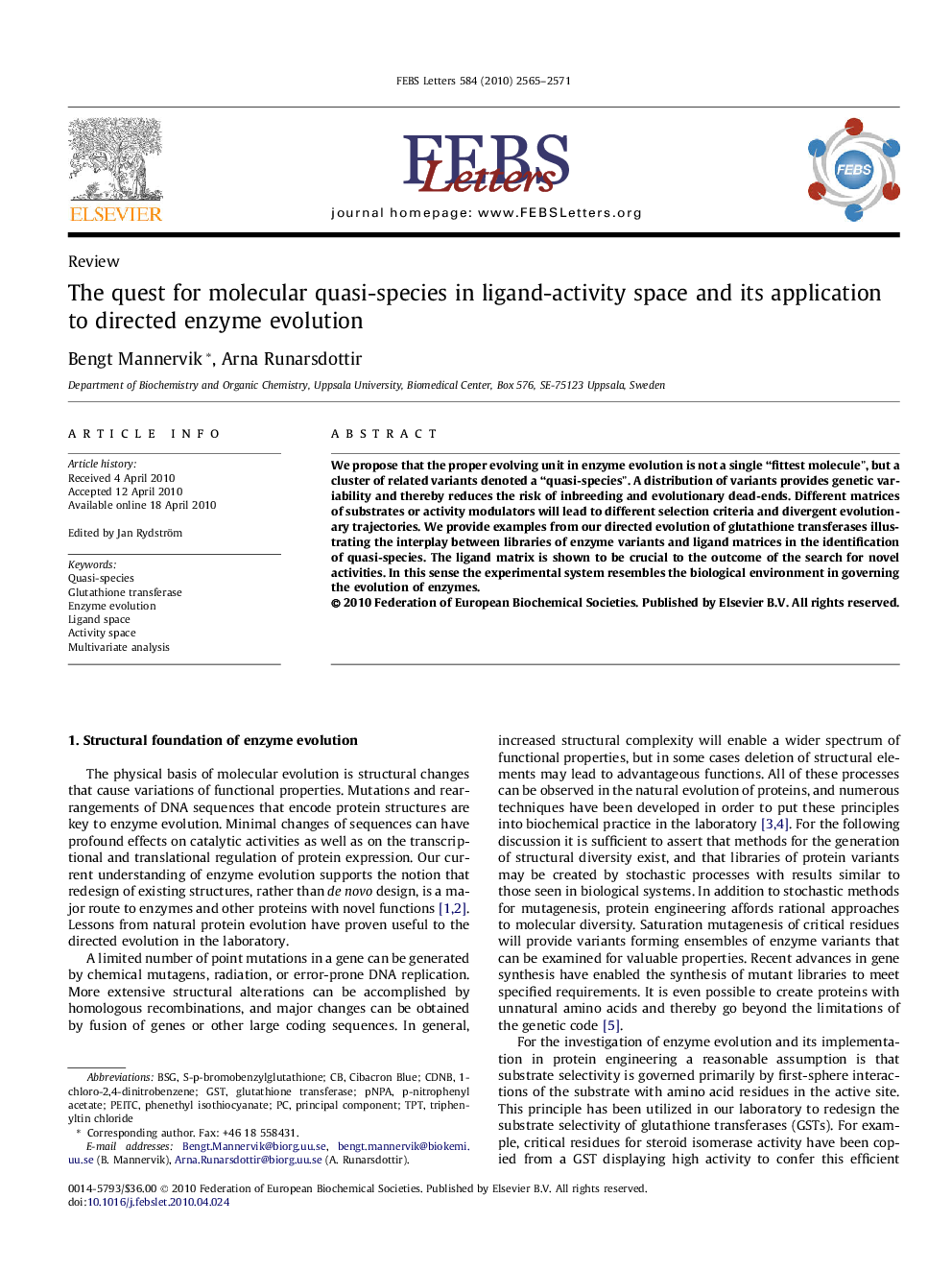| کد مقاله | کد نشریه | سال انتشار | مقاله انگلیسی | نسخه تمام متن |
|---|---|---|---|---|
| 2049086 | 1074116 | 2010 | 7 صفحه PDF | دانلود رایگان |

We propose that the proper evolving unit in enzyme evolution is not a single “fittest molecule”, but a cluster of related variants denoted a “quasi-species”. A distribution of variants provides genetic variability and thereby reduces the risk of inbreeding and evolutionary dead-ends. Different matrices of substrates or activity modulators will lead to different selection criteria and divergent evolutionary trajectories. We provide examples from our directed evolution of glutathione transferases illustrating the interplay between libraries of enzyme variants and ligand matrices in the identification of quasi-species. The ligand matrix is shown to be crucial to the outcome of the search for novel activities. In this sense the experimental system resembles the biological environment in governing the evolution of enzymes.
Journal: FEBS Letters - Volume 584, Issue 12, 18 June 2010, Pages 2565–2571